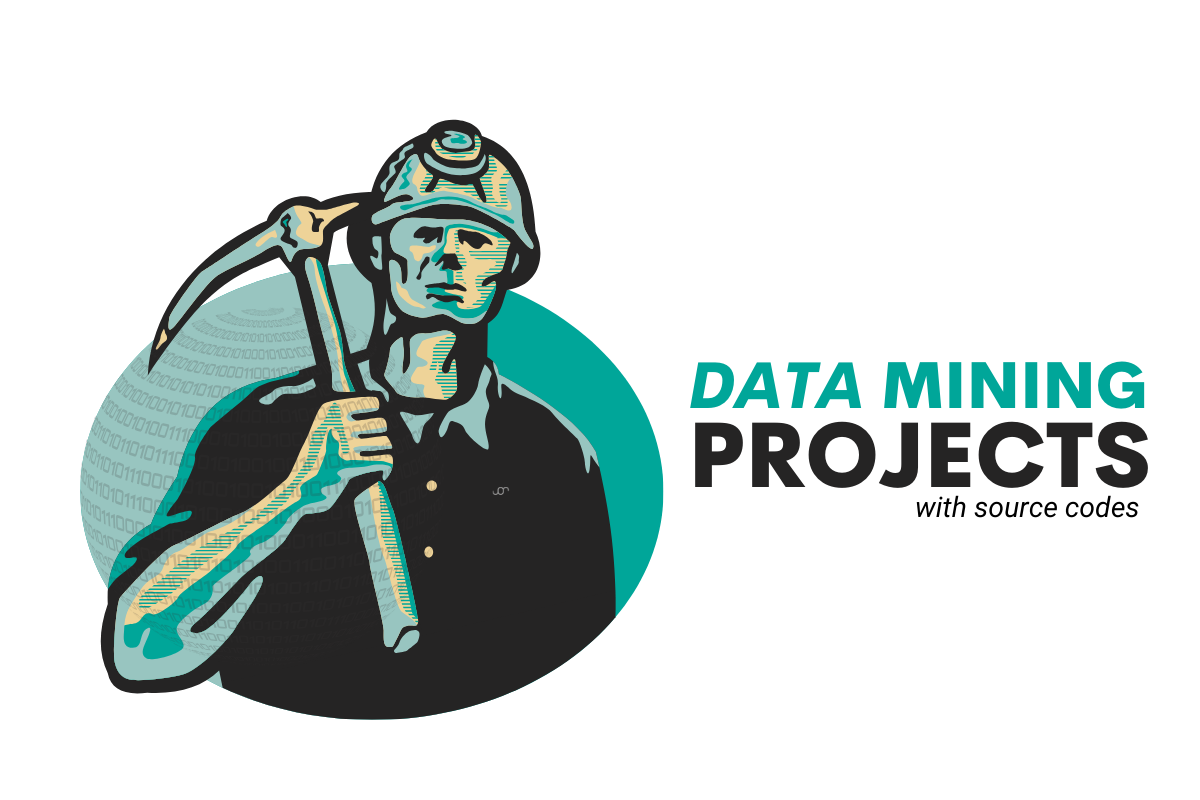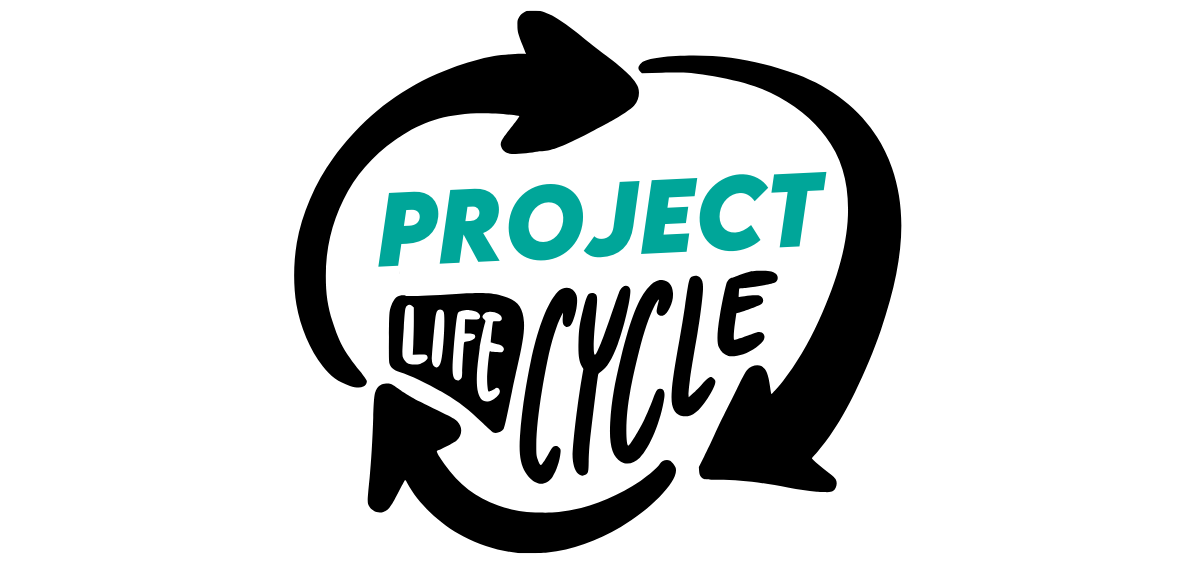Data Mining Projects: With Source Codes

 Written by:
Written by:Nathan Rosidi
Unlock the Full Potential of Data with Expert-Guided Data Mining Projects and Source Code.
Are you willing to dig through the world of data mining projects? If your answer is yes, you are at the right place. So, welcome to the journey through the world of data mining projects.
Picture kicking off a film fest, guiding you via thrilling stories with sudden twists, offering a peek into what's coming. Precisely this kind of journey awaits as we go into the vibrant arena of data mining projects.
In this article, we will shed light on the world of data mining projects, a field that is turning out to be a gold mine in the data-driven era we are living in. So, grab a seat, and let's start this journey together!
What is Data Mining?
Think of having a magical ability that helps in discover hidden gems in a vast ocean of details; that essentially mirrors what data mining empowers you with.
It is discovering patterns and relationships in large datasets through methods like machine learning, statistics, and database systems.
Historical Background of Data Mining
When we look back, we find that data mining isn't a new phenomenon. It has its roots in the 1960s with the advent of data warehouses.
Over the years, it has evolved, adopting new methodologies and tools, and becoming an indispensable part of business and decision-making processes today.
Project Lifecycle

From planning to monitoring and maintenance, building a proper project lifecycle is an important phase of your projects, as well as in Data Mining projects. Let’s start analyzing with planning stage.
Planning Stage
Planning is like making a plan for a building; it prepares us for the steps ahead. At this point, we figure out our goals, find out where to get our data from and choose the right tools and technologies. A well-thought-out plan can lead to a successful data mining project.
Implementation Phase
Now it's time to roll up your sleeves and let’s get started. During the implementation phase, the real action begins with the theories and plans merging into a working model. It’s the stage where we apply algorithms to data, visualize patterns, and make sense of the intricate web of information.
Monitoring and Maintenance
Consider this as nurturing a plant; constant care and attention are needed. Similarly, monitoring and maintaining a data mining project ensures its longevity and relevance. Regular updates and fine-tuning are part and parcel of this stage.
Data Sources
Stepping into the world of data mining is like entering a vast library. The data sources are your books, teeming with information waiting to be discovered. Understanding different data sources and their peculiarities is key in steering your data mining project to success. We can harness data from various places including databases, web scraping, social media platforms, and more.
Data Mining Tools and Technologies
Popular Tools
Entering the toolkit of a data miner is like walking into a tech wizard’s lair. There are tools that have stood the test of time, like Python and R, loved for their versatility and robustness.
Additionally, SQL remains a favorite for database management.
Understanding these tools is pivotal in navigating the data mining landscape effectively.
If you want to discover more about these tools, you can read about data mining tools here.
Emerging Technologies
Keeping up with the fast-paced world of data science, we witness the advent of new technologies constantly.
Picture being in a sci-fi movie where innovation is relentless; that’s the current landscape with technologies such as deep learning and neural networks taking center stage. It’s a thrilling time to be a data miner, with ever-evolving tools at your disposal.
Pros and Cons
As in any blockbuster movie, there are heroes and villains; similarly, tools and technologies come with their pros and cons. While some tools offer user-friendliness, others stand out for their advanced functionalities.
It’s about choosing the right cast for your data-mining movie to make it a blockbuster success.
Data mining projects with source code

Retail Sector
Just like a fascinating documentary showcases real-life instances, delve into data mining projects in the retail sector that leverage the potential of data to craft strategies, converting casual browsers into loyal customers.
Market Basket Analysis
Kaggle Notebook: Market Basket Analysis
Description: Analyze purchasing patterns to identify associations between different products.
Skills :
- EDA : Begin with analyzing the dataset to understand the different types of products available and the patterns in which they are purchased. Use visualization tools to highlight these patterns.
- Categorical Data Modeling: Learn to create association rules using different algorithms such as Apriori and FP-growth to find the associations between different products.
Customer Segmentation
Kaggle Notebook: Mall Customer Segmentation Data
Description: Group customers into different categories based on their purchasing behavior.
Solution Suggestion:
- EDA: Start with a deep dive into the customer data. Understand the various features and their distributions. Use visualization tools to depict customer behaviors and patterns.
- Clustering: Develop skills in clustering techniques like K-Means or Hierarchical clustering to group customers based on their purchasing behavior. This will help in identifying different customer segments.
Healthcare Industry
Picture a science documentary unraveling the mysteries of the human body. Similarly, data mining projects in the healthcare sector unveil secrets to better patient care and medical advancements.
Heart Disease Prediction
Kaggle Notebook: Heart Disease UCI
Description: Analyze and predict heart diseases using data mining techniques.
Solution Suggestion:
- EDA: Start with exploring the dataset to identify patterns and correlations between different variables.
- Machine Learning: Utilize classification algorithms such as Logistic Regression and Decision Trees to build a predictive model. Enhance your skill in fine-tuning the model for better accuracy.
Pneumonia Detection
Kaggle Notebook: Pneumonia Detection
Description: Use image data to detect pneumonia in patients.
Solution Suggestion:
- Image Processing: Learn to preprocess the image data to enhance the features that are crucial for detecting pneumonia.
- Deep Learning: Develop skills in Convolutional Neural Networks (CNN) to build a model that can analyze X-ray images and detect pneumonia.
Finance and Banking
Drawing parallels with the captivating world of movies, data mining in the entertainment industry helps in creating personalized experiences and understanding audience preferences.
Credit Card Fraud Detection
Kaggle Notebook: Credit Card Fraud Detection
Description: Build models to detect fraudulent credit card transactions.
Solution Suggestion:
- EDA: Start by understanding the data distribution and identifying any patterns or anomalies in the dataset.
- Machine Learning: Learn to build predictive models using algorithms such as logistic regression or random forests to identify fraudulent transactions. Focus on handling imbalanced data, a common issue in fraud detection datasets.
Stock Market Prediction
Kaggle Notebook: Huge Stock Market Dataset
Description: Analyze stock market data and predict stock price movements.
Solution Suggestion:
- Time Series Analysis: Gain skills in analyzing time-series data which is crucial in stock market predictions. Learn to identify trends and seasonality in stock prices.
- Predictive Modeling: Develop skills in using regression analysis and other predictive modeling techniques to forecast stock prices. Understand the concept of overfitting and how to avoid it to build robust models.
Entertainment Industry
Drawing parallels with the captivating world of movies, data mining in the entertainment industry helps in creating personalized experiences and understanding audience preferences.
Movie Recommendation System
Kaggle Notebook: MovieLens Dataset
Description: Create a system that recommends movies based on user preferences and ratings.
Solution Suggestion:
- EDA (Exploratory Data Analysis): Learn to explore and understand the dataset to identify potential features for the recommendation system.
- Collaborative Filtering: Focus on understanding and implementing collaborative filtering techniques, both user-based and item-based, to make recommendations based on user preferences and ratings.
Music Recommendation System
Kaggle Notebook: Spotify Dataset
Description: Develop a recommendation system using Spotify's dataset to suggest music tracks to users.
Solution Suggestion:
- EDA (Exploratory Data Analysis): Start by understanding the characteristics of music tracks in the dataset and the user preferences.
- Feature Engineering: Learn to create new features from existing data to improve the performance of the recommendation system.
- Machine Learning: Develop skills in building recommendation algorithms, possibly utilizing matrix factorization methods or deep learning techniques.
What are the Challenges you might face in Data Mining?

In this section, we will cover the possible challenges that you might face in Data Mining, starting with Data Quality and going to privacy concerts and ethical dilemmas, or even legal challenges like OpenAI faced with.
Data Quality
Every hero faces challenges. In the realm of data mining, data quality emerges as a significant protagonist. Ensuring the accuracy, completeness, and reliability of data is a hurdle that data miners continually strive to overcome.
Privacy Concerns
Just like a scene in a thriller film where secrets are precious, data mining deals with huge privacy concerns. Finding the sweet spot between using data for insights and preserving personal privacy stands as a tough job. It underlines the necessity for solid, unyielding rules around privacy.
Ethical Dilemmas
Diving in, we find ourselves amidst a serious drama filled with moral questions at every turn. Topics like stopping the misuse of data and guaranteeing fairness in machine learning algorithms stand vital in the big story of data mining.
Legal Challenges
This privacy concert ethical dilemma might lead you or some companies to legal issues too, like OpenAI was sued for public data to train ChatGPT, here.
Future Trends of Data Mining Projects
Automation
Stepping into the future is like entering a science fiction film where anything is possible. Automation stands tall in this narrative, promising to take over repetitive tasks and offering more room for creativity and innovation in data mining projects.
For instance, consider the use of Lambda functions which are designed to use automation to manage runtimes, thereby freeing up individuals to focus on design and innovation rather than monotonous tasks.
AI Integration
Imagine a super-intelligent AI assistant, something straight out of a futuristic movie, aiding data miners in their endeavors. AI integration is not just a fantasy; it is progressively becoming a reality, bringing unprecedented capabilities and efficiencies to data mining projects.
In a real-world scenario, you can use a tool powered by OpenAI's API is setting a new standard in AI integration, making the data mining process streamlined, more intuitive, and responsive.
Real-time Data Mining
As we move forward, the script of our data mining story is being rewritten with real-time analysis. It’s like watching a live show where data is mined and analyzed as it gets generated, offering businesses a competitive edge with timely insights.
Imagine a company using web crawlers to continuously fetch the latest data, providing them with up-to-the-minute insights and helping them to stay a step ahead in the competitive market.
Conclusion
Closing the curtains on our data mining saga, it stands clear that we are navigating a captivating storyline rich with emerging tech and infinite opportunities.
Diving from fundamentals to unveiling real-world uses and what tomorrow might hold, we adventured into the lively universe of data mining endeavors. If you want to start from scratch, check this article to discover 19 Data Science Project Ideas for Beginners.
This realm offers hurdles yet brings forth prizes, reminding one of a riveting film keeping you on edge till its final moment. Stay with us for the real-life unfolding of this electrifying tale and visit our platform. See you there!
FAQs
1. What is data mining?
Data mining is discovering patterns and relationships in large datasets through methods like machine learning, statistics, and database systems.
2. What are some popular tools used in data mining?
Some popular tools include Python, R, and SQL, known for their versatility and robustness.
3. How is data mining utilized in healthcare?
In healthcare, data mining helps improve diagnostic accuracy, predict disease trends, and help professionals to avoid them.
4. What are the emerging trends in data mining?
Emerging trends include automation, AI integration, and real-time data mining, bringing unprecedented capabilities to data mining projects.
5. What challenges do data mining projects face?
Data mining projects face challenges such as data quality issues, privacy concerns, and ethical dilemmas and legal issues.
Share


